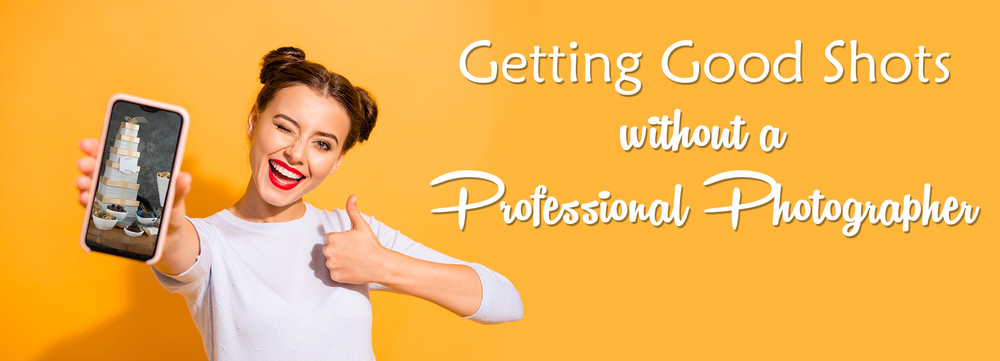Getting Good Shots without a Professional Photographer
Have you ever needed a product shot to send to a client? Maybe you have the perfect item in your showroom for a project and want to send them a photo of it. Maybe you received a sample and would like to give them a preview before presenting the sample itself. Maybe you just want a photo for your or your client's records. There are plenty of reasons to need a product shot that don't require a professional photographer, but that doesn't mean you need to compromise on quality! Even mobile phone shots can be brought to the next level by keeping a few simple things in mind.
Consider the Purpose
Are you taking a quick shot to share an idea for something in your showroom or a sample you've received from a supplier? Do you want to convey the bare facts or show the product in use? Is it for a specific client or to post on social media?
Knowing what you want to use a photo for can entirely change the look you're going for, so make sure you take into account the final purpose. A photo for social media may be more casual or a lifestyle shot, while a presentation shot for a client may be more informational. It is always good to tailor your shot, and often only a few small changes will make a large difference.
Small Investments, Big Payoff
Blog_Good-Shots_1.jpg

Just a standard shot.
Blog_Good-Shots_2.jpg

Now, with a little sprucing up!
"Lighting is key to any great photo!" says Brian of EMT. "What’s the best type of lighting to shoot in you might ask? Diffused light! It softens the light so your photos aren’t washed out and helps with those nasty glares. It also makes those shadows not so harsh and leaves everything looking dreamy. No one likes harsh light! When it comes to diffusers, the bigger the better. I use one outside on sunny days and also inside to shoot studio light through it."
"People often ask me what type of lighting they should buy," Brian continues. "The answer really depends on where you plan on shooting. The same rule applies as the diffuser: the bigger the light source the better but it’s not always needed. The thing you need to consider is how you need the light to be powered. Do you need it to be on a battery or will you always have access to a plug. Second is how portable do you need it to be? Look for a light that's inexpensive and you can take anywhere!"
If you like to edit your photos, too, there are myriad options, ranging from full graphics editing software to more-accessible photo editing software that has a much more gradual learning curve. If you want the former, you can download free programs such as GIMP or subscribe to Adobe Photoshop for $20.99 per month. Odds are that you don't need all of those features, though, so Adobe also offers Adobe Photoshop Elements, which can be purchased outright for $99.99—and frequently goes on sale. (Prices are as of this writing and may change.)
Quirk It Up
Don't be afraid to add some personality to product photos. Try displaying the product with some props (as long as it's clear what the subject is). Use dynamic angles to showcase aspects that might otherwise not be apparent. Demonstrate it in use or in situ—and don't forget about video, especially if you're posting it to social media. Have fun with it! Your enjoyment and passion will shine through.
Always Be Learning
It's hard to create in a vacuum, so find the time to seek out ideas and inspiration.
The best way to learn is to do, so set up photos when you have a few spare minutes. Challenge yourself to come up with a fun shot of an everyday item or look at something in a different way. The more you photograph, the better your eye becomes.
Search online for classes. There are plenty of them available through subscription sites like Craftsy, but YouTube is also a great resource—and it's completely free! Classes and videos are available for mobile photography specifically, but don't shy away from those targeted at dSLR or mirrorless camera users; even if the technology is different, the basic concepts of composition are the same.
Take a look at the work of others, too. Whether professionals or amateurs, you can learn a lot by studying what works and what doesn't. Etsy is a great resource for this thanks to the broad variety of products available through the site and the nature of microbusinesses.
Use Your Resources
Unable to take the photo yourself, for whatever reason? Check with your supplier. They may have something to suit your purpose already or be able to set up what you're looking for. Even if it's not an option at the time, most suppliers are happy to work with you to find alternatives.
You don't need a professional photographer to turn even quick shots into appealing presentations. With a little planning, preparation, and a keen eye, every shot can be polished, allowing you to present every product in the best possible light.



